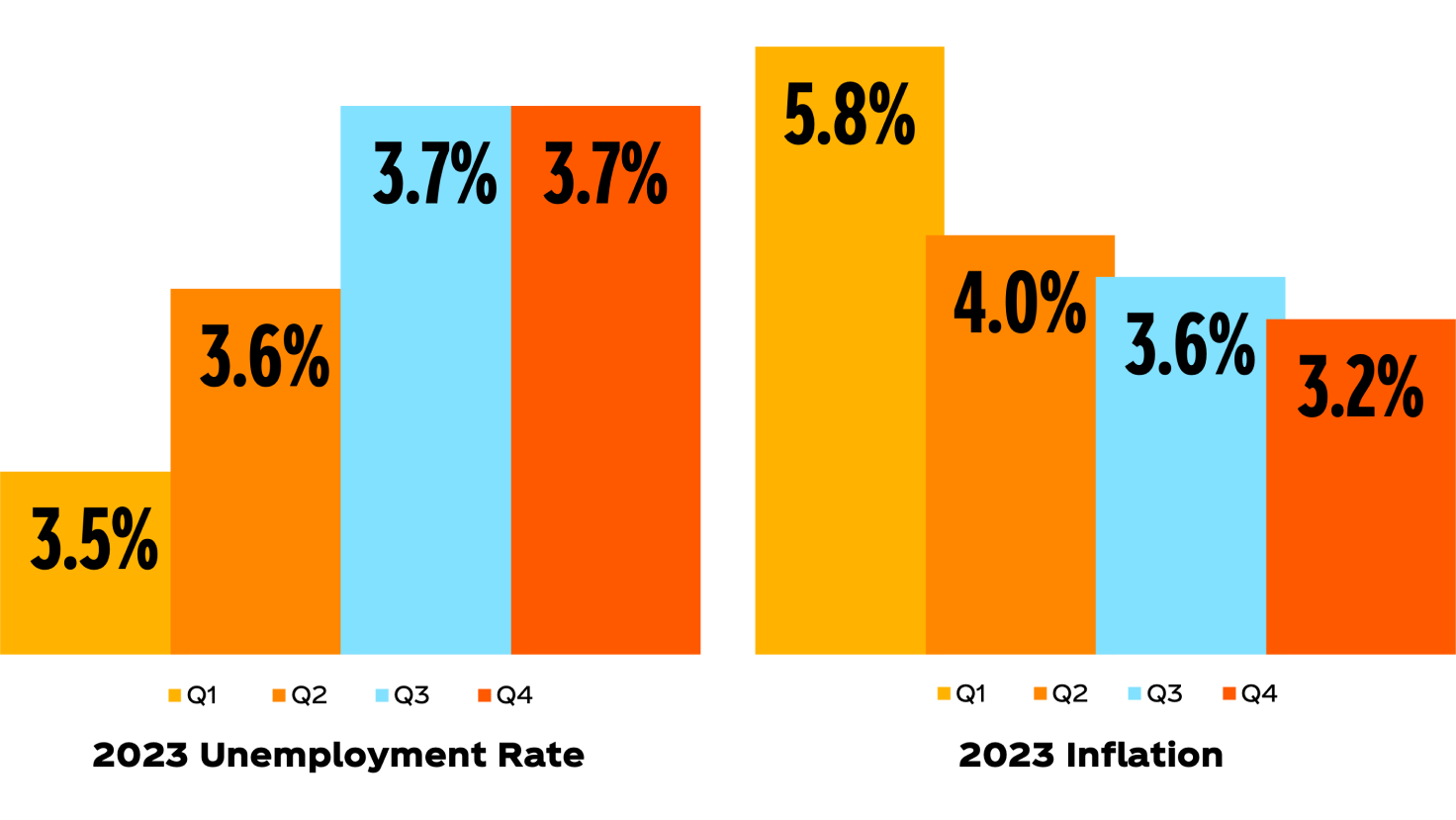View a screenreader-friendly version of this page.

2023 Macro economic view
MAY 2024
U.S. economic indicators are here and have potential to impact 2024.
last year at a glance
2023 was a year that avoided recession—the strength of the labor market and decreasing inflation were major factors.

2023 Key indicators
Consumer sentiment was historically low throughout 2023 as consumers grappled with high costs, increasing mortgage rates, and uncertainty. Bright spots, such as decelerating Producer Price Index and income growth, supported a path forward.

Balancing macro forces
It is important to prepare for opportunities and innovation in 2024—at both ends of potential market outcomes.
POTENTIAL OUTCOME:
Tailwinds will strengthen consumers’ financial position.
Decreased inflation, increases in real income, and a strong labor market support increased consumer spending.
- The labor market has showed sustained resilience, hedging fears of a recession.
- Throughout 2023, consumers are seeing an increase in real disposable personal income compared to the prior year.
- Secure income and decreased inflation helps consumers feel less friction when it comes to discretionary spending.
POTENTIAL OUTCOME:
Headwinds will threaten discretionary spend and pressure consumers.
Rising housing costs, high interest rates, and debt may result in reduced consumption.
- Post-pandemic tailwinds may fade, impacting economic growth.
- Consumers are looking for signs the macroeconomic environment is improving.
- Geopolitical risks create uncertainties heading into 2024.
Reframing economically uncertain times as an opportunity to build trust leads to meaningful growth.
Source: U.S Bureau of Labor Statistics
WANT TO SEE MORE?
Discover more through the lens in the articles below.